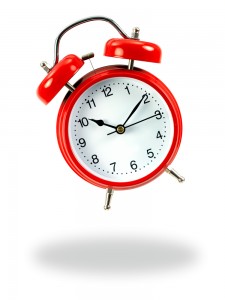Daylight Savings ends on Sunday, November 6th. Most U.S. residents set their clocks one hour forward in spring and one hour back in fall. However, residents of Arizona and Hawaii—along with the U.S. territories of Puerto Rico and the Virgin Islands, among others—don’t observe Daylight Savings Time (DST).
Why do we observe DST? And what exactly is it?

The idea of daylight saving was first conceived by Benjamin Franklin. In 1784 good ole Ben wrote “An Economical Project,” a little whimsy on the thrift of natural versus artificial lighting. At the time, nobody paid much attention to it.
In 1883 the U.S. railroad industry established official time zones with a set standard time within each zone. Congress eventually came on board, signing the railroad time zone system into law in 1918. The Act of 1918 legislated mandatory DST observance, but that section of the act was repealed in the following year.

The idea of Daylight Savings is that it saves us money by reducing our energy consumption. But does moving the clock back and forth one hour really save the country money, or energy? Does it promote more consumerism, or does it hurt agriculture? Worse, is it dangerous?
The answer is, Nobody knows for sure. Research has shown that more available daylight increases energy savings while decreasing the number of traffic accidents, traffic fatalities, and incidences of crime. However, there have also been numerous studies that suggest the opposite—that more daylight hours in the evening leads to more gasoline consumption, and that people having difficulty adjusting to new sleep schedules cause more accidents the first few weeks of DST.
Farmers generally dislike Daylight Savings. Not only does it mean they have to work in the early-morning darkness for an extra hour, but their livestock are caught completely unaware of the change in time. One Canadian poultry farmer groused, "The chickens do not adapt to the changed clock until several weeks have gone by, so the first week of April and the last week of October are very frustrating for us."

This isn’t just a US issue. Countries all over the world decide their time standards. Some countries set their clocks to fractional time zones. For example, Kathmandu, Nepal is 5:45 hours ahead of Universal Time (a timescale based on the rotation of the Earth), and Calcutta (Kolkatta), India is 5:30 ahead. This is not an attempt to compromise and have half Daylight Saving Time year-round, but rather an adjustment made because the countries straddle international time zones.
If you’re in one of the 48 states that do participate in Daylight Savings, remember to set your clock back one hour on Saturday night! At least in the fall you get an extra hour of Sunday morning!
You need to
login to comment.